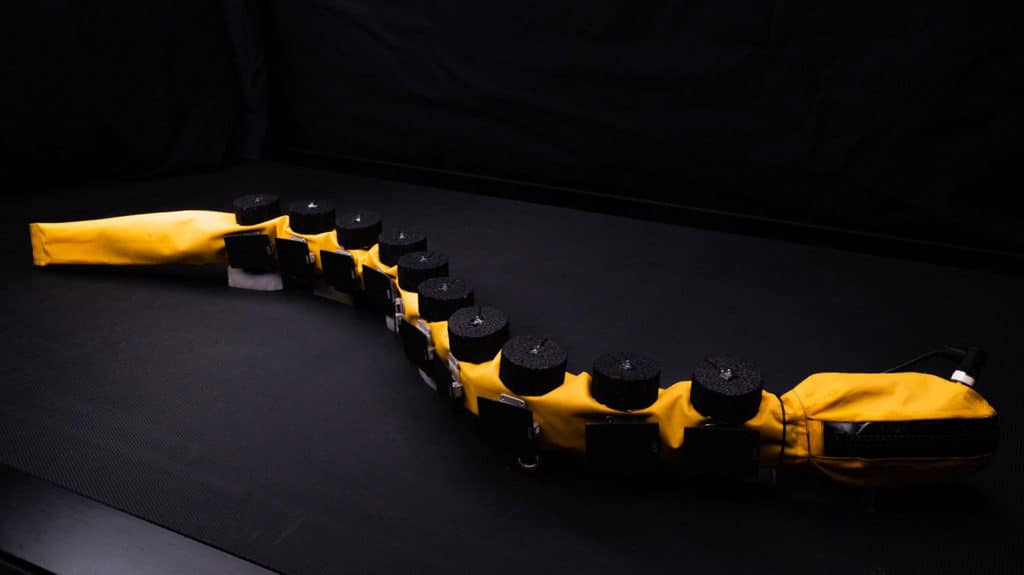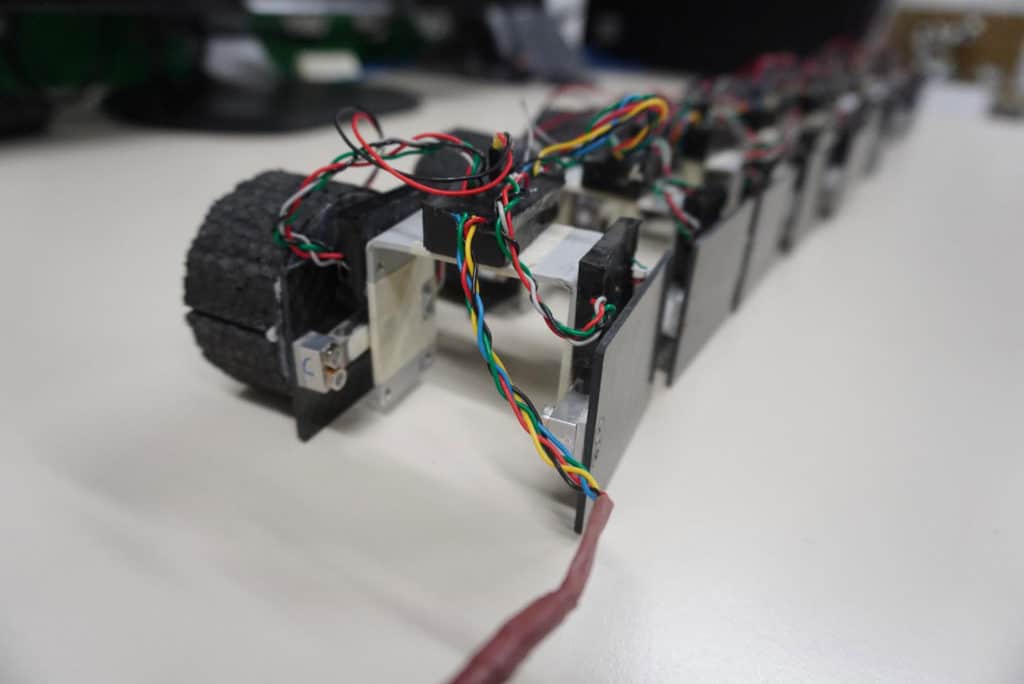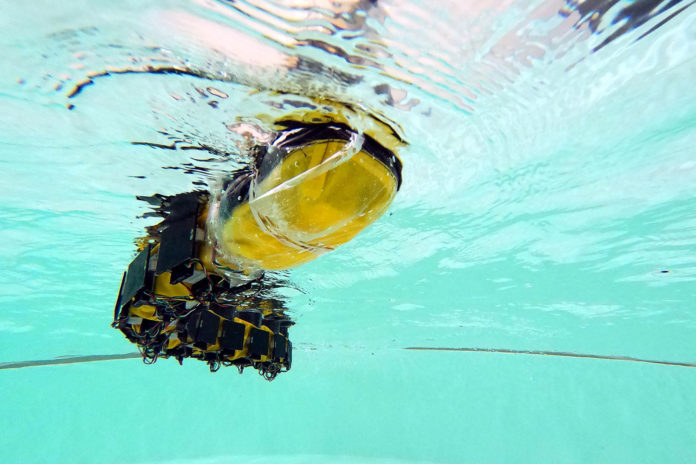Researchers at the Biorobotics Laboratory (BioRob) in EPFL’s School of Engineering are developing innovative robots in order to study locomotion in animals and, ultimately, gain a better understanding of the neuroscience behind the generation of movement.
One such robot is “AgnathaX,” a swimming robot that utilizes simulated central and peripheral nervous systems for more robust performance. The robot was developed in collaboration with researchers at Tohoku University in Japan, Institut Mines-Télécom Atlantique in Nantes, France, and Université de Sherbrooke in Canada. The team’s goal with this robot was to examine how an animal’s nervous system processes sensory information so as to produce a given kind of movement.

AgnathaX is a long, undulating swimming robot designed to mimic a lamprey, which is a primitive eel-like fish. It contains a series of motors that actuate the robot’s ten segments to move in waves, just like the muscles of the living lamprey do. The robot also has force sensors distributed laterally along its segments that mimic the pressure-sensitive cells on the skin of the lamprey and detect the force of water against its body.
Mathematical models investigated using the swimming robot simulate the different components of the nervous system and help better understand its intricate dynamics.

“We had AgnathaX swim in a pool equipped with a motion tracking system so that we could measure the robot’s movements,” says Laura Paez, a Ph.D. student at BioRob. “As it swam, we selectively activated and deactivated the central and peripheral inputs and outputs of the nervous system at each segment so that we could test our hypotheses about the neuroscience involved.”
The project scientists said their testing found that both the central and peripheral nervous systems contribute to the lamprey’s locomotion. The benefit of having the two systems work in tandem is that it provides increased resilience against neural disruptions, such as failures in the communication between body segments or muted sensing mechanisms.
“In other words, by drawing on a combination of central and peripheral components, the robot could resist a larger number of neural disruptions and keep swimming at high speeds, as opposed to robots with only one kind of component,” says Kamilo Melo, a co-author of the study. “We also found that the force sensors in the skin of the robot, along with the physical interactions of the robot’s body and the water, provide useful signals for generating and synchronizing the rhythmic muscle activity necessary for locomotion.“
It is now hoped that the team’s findings can be used to design more effective swimming robots for search and rescue missions and environmental monitoring or even improved treatments for human spinal cord injuries.
